Mexico. The color, sounds, and art of this country are truly inspiring. A highlight to any visit to Mexico City must include a day trip in the beautiful Coyoacán neighborhood of Mexico City to find Frida Kahlo and Diego Rivera’s “Casa Azul” (Blue House).
As a mosaic enthusiast, I was excited to find a rare example of the motif of the ‘sickle and hammer’ in mosaic, designed as a comet emblazoned across the ceiling of their patio. Diego and Frida were ardent communists and they incorporated this philosophy into their lives and artwork. In fact, Leon Trotsky was their neighbor and shhhh, Frida’s lover.
Here’s a short video (1.54 min.) showing Rivera and Kahlo, with Trotsky and his wife, having a friendly hang around the compound.
[youtube http://www.youtube.com/watch?v=45Z0keLaGhQ&w=640&h=360]

Fresco by Diego Rivera, ‘Man at the Crossroads’ depicts Lenin front and center. Image captured before it was destroyed in 1934.
Diego Rivera included a controversial portrait of Lenin in his 1933 Rockefeller Center mural in New York to such an uproar, that it was chipped off the wall the following year. But in their own home, they had no such limitations. Their mosaic is made of grey and white local volcanic lava rock, as is the entire exterior of the house.
I asked the Casa Azul docents who made the mosaic, but no one knew.
Could it have been created by their friend, architect/painter/muralist Juan O’Gorman, who championed this style of fitted stone mosaic in Mexico? Mr. O’Gorman’s most prominent and well known work can be found at the Central Library of the UNAM campus, Universidad Nacional Autónomo de México, in Mexico City.
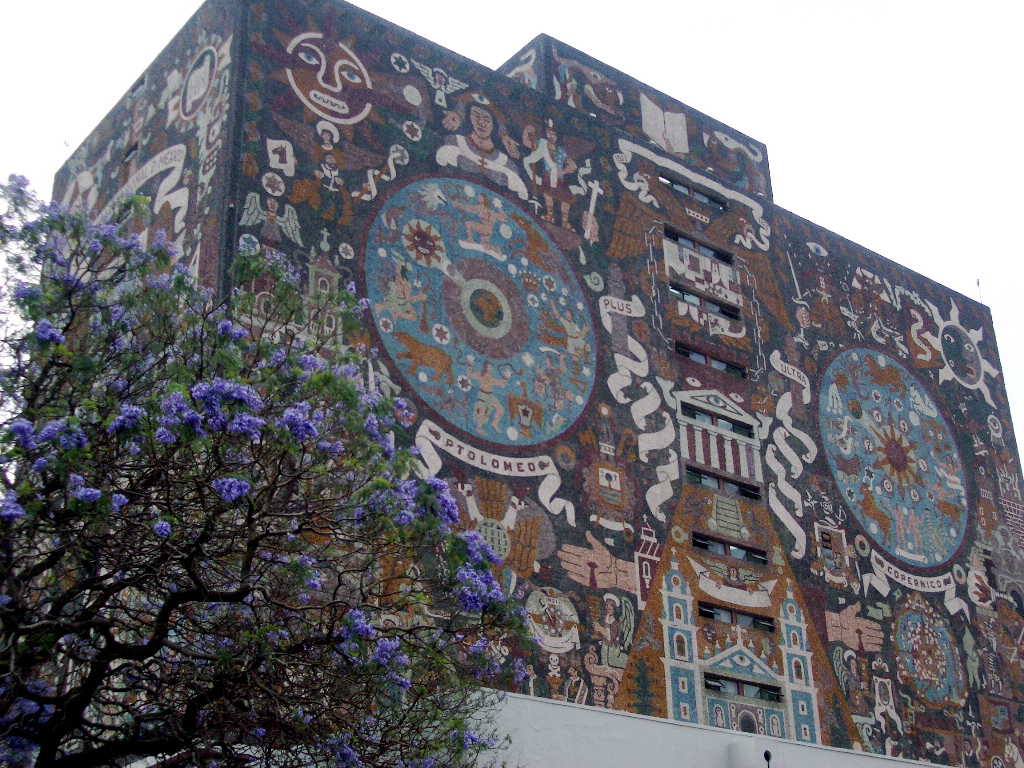
South Wall of the Central Library mosaic, by Juan o”Gorman, 1948-55. Uses over 150 different types of stone quarried from all over Mexico. photo Lillian Sizemore
Between 1949 and 1951 O’Gorman designed and directed the construction of the Central Library, a building covered with a mosaic of natural stones, covering an area of 4000 meters square. The mosaic was set onto pre-cast concrete slabs, each measuring one meter square. An iron grid was constructed onto the facade of the structure, and each completed slab was hoisted and bolted into place. This was a ground-breaking construction technique of the time. Some of the best background I’ve found on the murals, their meaning, history, and construction methods can be found on the University’s website (in Spanish), here.
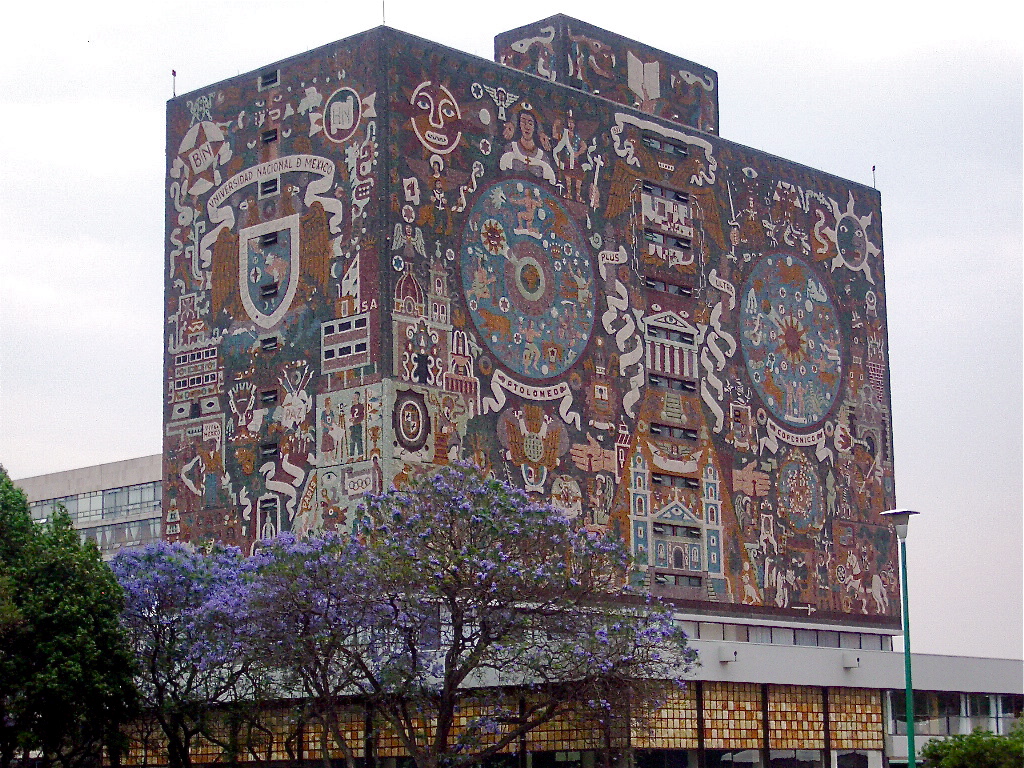
View of the West and South Walls – the mural is rich with symbolism, invoking the ancient god of wisdom Tlaloc, and tracing Meso American history to contemporary times. Jacaranda trees in bloom. photo: Lillian Sizemore
The following year (2006), while on another trip, I discovered this fantastic mural in Oaxaca, while driving with a friend to her son’s piano lesson. Pull over!
As is often the case, many apprentices are trained on a large job like the UNAM library. I suspect the artist who made this mural had worked with O’Gorman, then went on to do this work for the city of Oaxaca. The subject of the mural is legal reform, and it is dated 1963. The materials reflect the UNAM and Frida’s comet: a wide variety of local colorful stones, perhaps even leftovers from the UNAM job? In the center of the mural, a beautifully carved bas relief depicts the eagle eating the serpent in a modernist, almost art deco, style.
The construction method is also similar to UNAM, with the stones set into a slab, set into a smaller, but regular grid framework. A muscular, graphic approach accented with contrasting outlines identify the rather blocky subjects from the background.

Beautiful green chalcedony stone in the background. Much of the Oaxacan population are indigenous Zapotec. photo: Lillian Sizemore
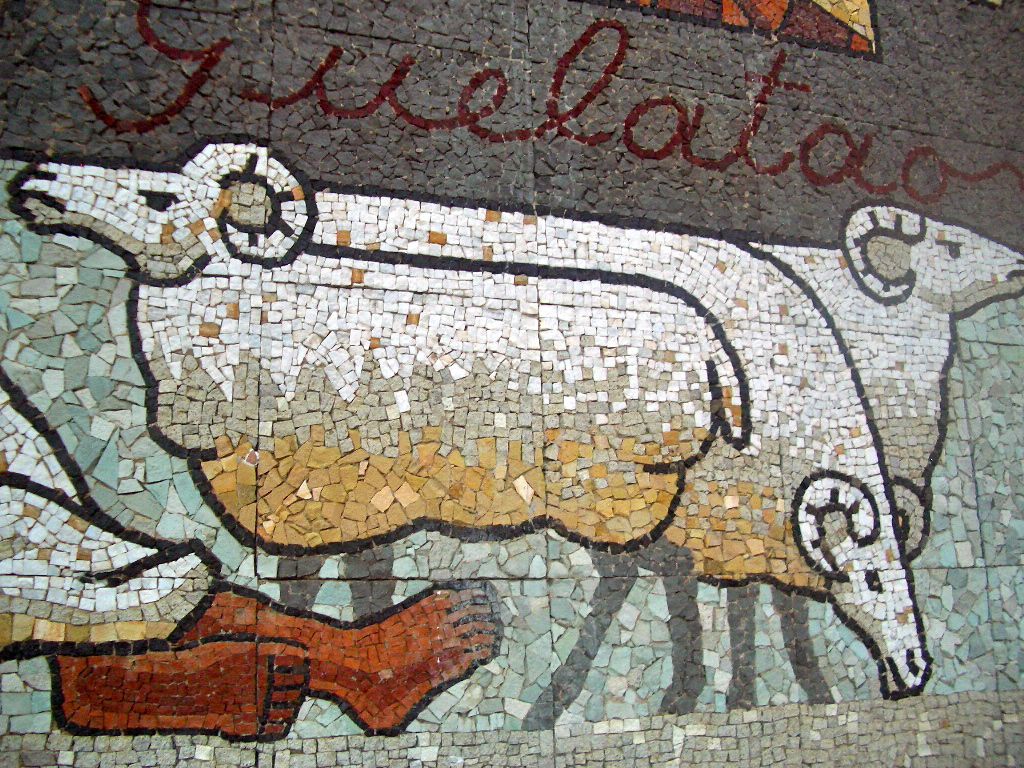
Guelatao, Oaxaca is the birth place of Mexico’s most famous leader, President Benito Juárez. Love these fluffy rams.
Diego Rivera’s travels and commissions in the United States during the 1930s had lasting impact on US muralism. His interaction with many artists employed through the WPA Federal Arts Program can not be underestimated. O’Gorman’s herculean effort at UNAM marked technological breakthroughs for the use of mosaic in the architectural setting.
Mexico is rich with mosaic work made from a variety of media, stone, smalti, and even seeds.But for today, just a small example of some unique and beautiful work from my mosaic archives and travels.
¡VIVA MÉXICO!
¡ART FOR THE PEOPLE !
more on Frida and Diego’s politics here


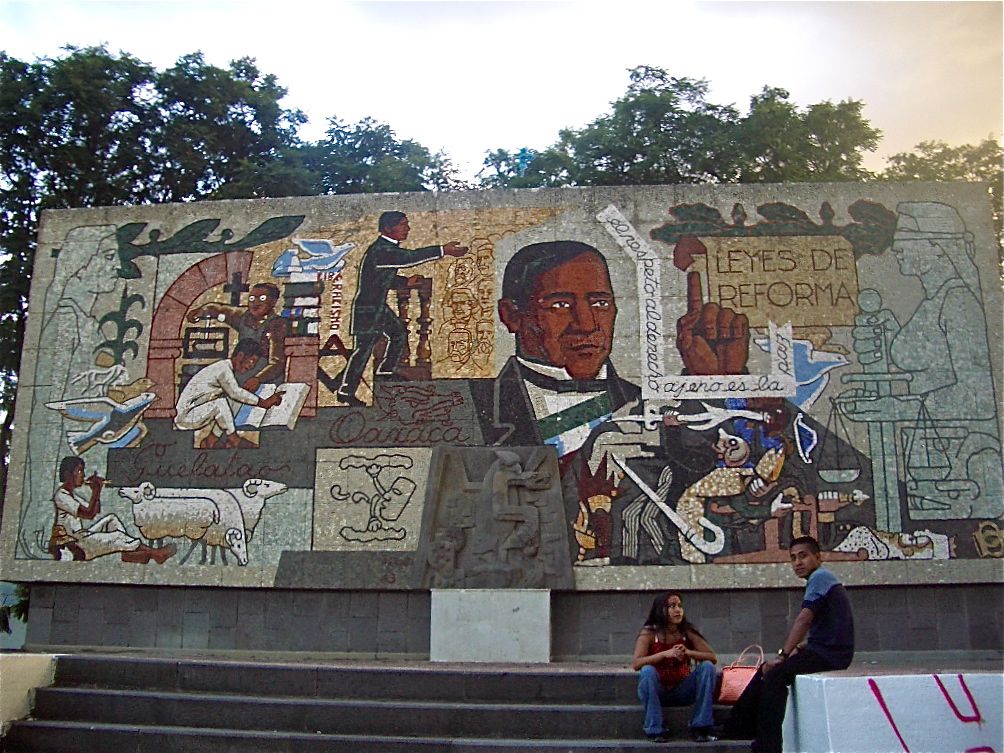
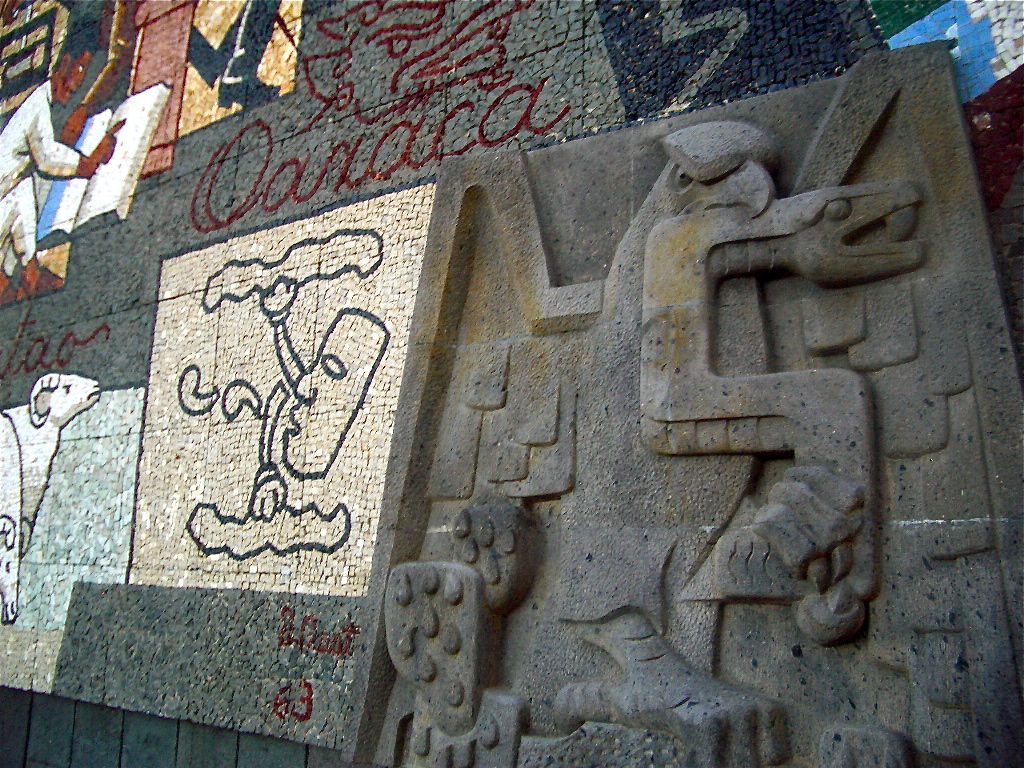

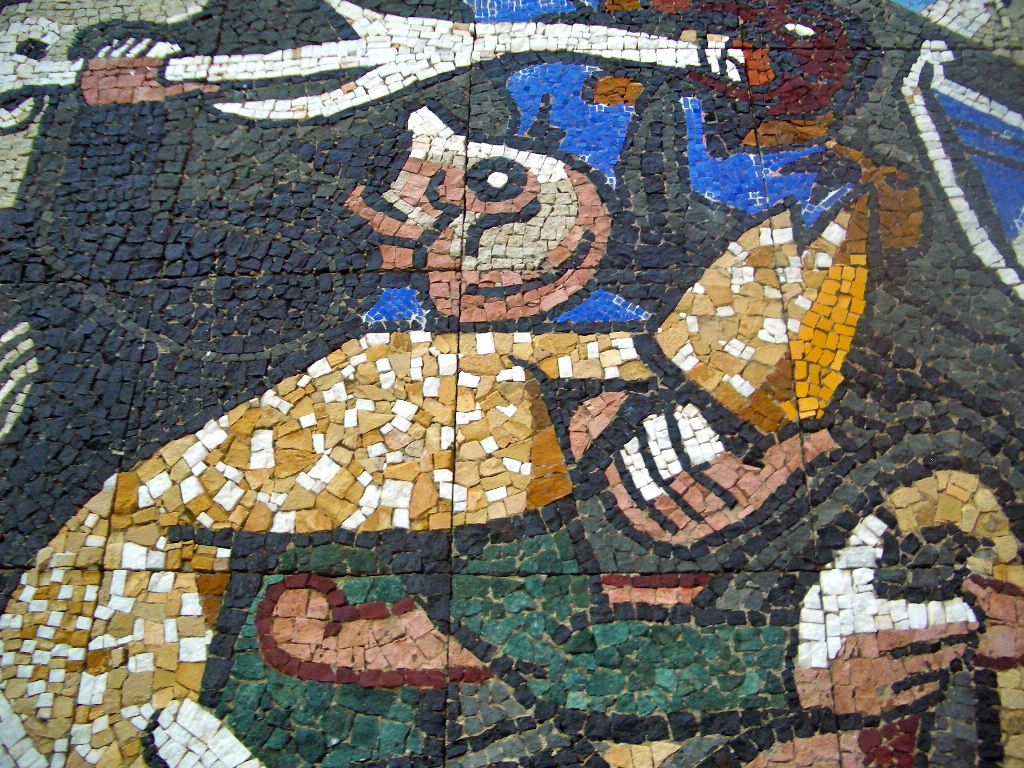

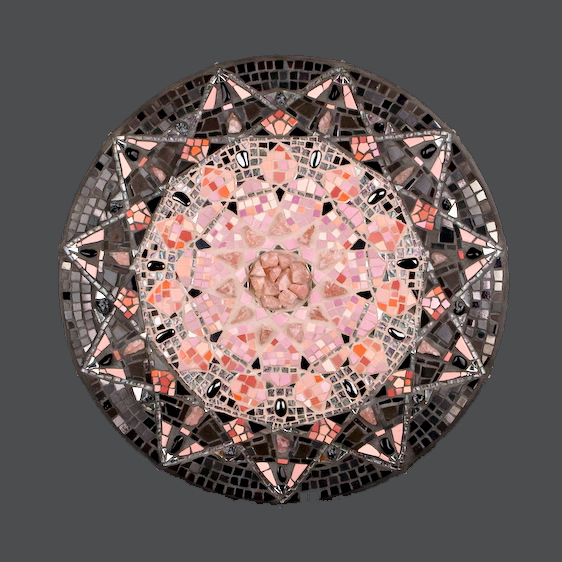
Great post, Lillian, thank you. Get my mom to tell you about visiting Diego in Mexico City in the late 40’s with my dad (who decided not to buy any artwork because there weren’t any paintings available – just drawings. He regretted it the rest of his life :-/
thanks Sonia! – how exciting they met Diego, and isn’t it too bad your Dad couldn’t go for a “work on paper” – Did they meet in their studio in San Angel? We visited this location too, with the bridge between studios and a cactus fence. thanks for commenting!
Wonderful post, Lillian!
thanks Julie, glad you enjoyed and thanks for visiting the blog!
I hadn’t known that the library mural was made of local stone. Thanks for helping me to “see clearly now.” And that Oaxaca mural was a great find. The constructions sounds like what Sheets did with Notre Dame’s “Touchdown Jesus.” Sharing with MAN readers . . .
thanks for sharing Nancie! – the Sheets “Touchdown Jesus” AKA Word of Life, was more like a giant “opus sectile” – cut and fitted slabs of various stone, granite, marble, not tessellated mosaic, like O’Gorman’s approach. But the massive scale is certainly on par.